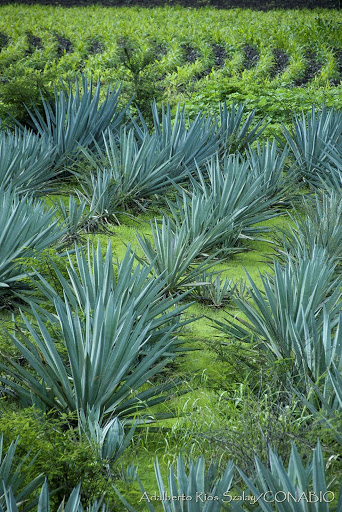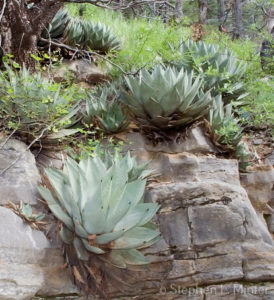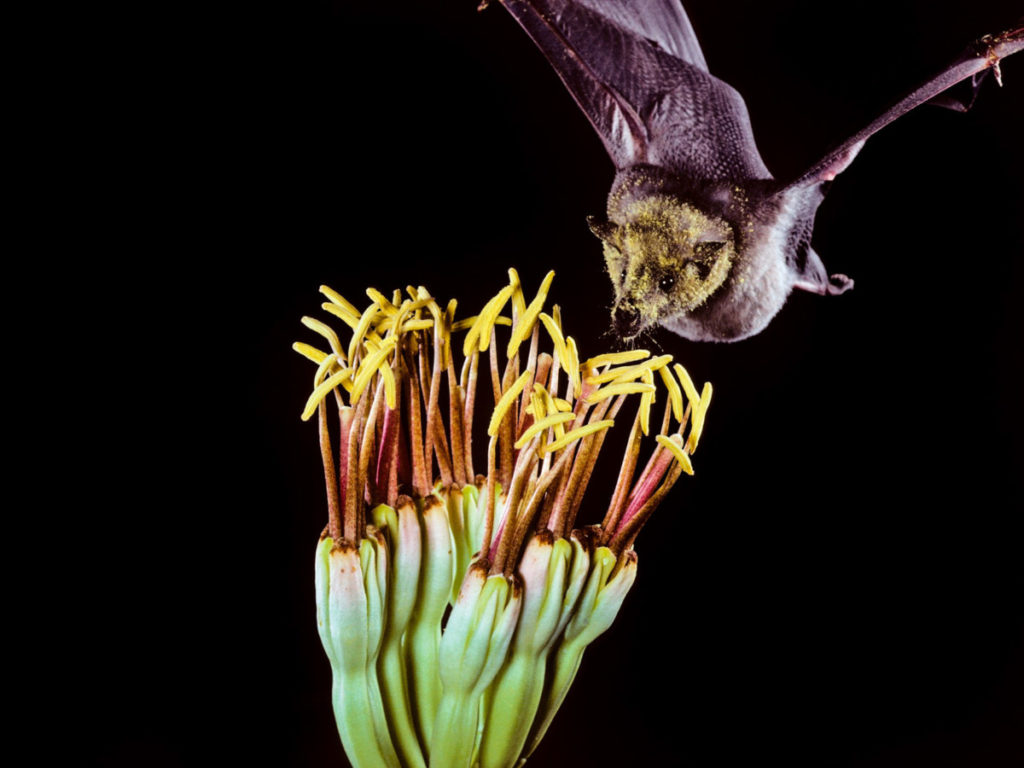It is Friday, so let’s celebrate one of the most conspicuous, ecologically and culturally important plant species of the arid regions of North America—agave. It’s iconic for the Sky Island region and a symbol on our Sky Island Alliance logo. Also called the “century plant” because of their long lifespan, agaves are a genus of monocot plants (like grasses and palms) in the Asparagaceae family (yes, the same family that gives you asparagus). The whole genus is native to the Americas, running from Utah all the way down to the arid regions of South America but with most of the species occurring in North America, especially in Mexico. Of the 150 species recognized in North America, 40 are native to the Sonoran Desert region, where they delight us with their beautiful and timeless presence.
The word agave comes from the Greek word “agavus” which means admirable and illustrious. They like well-drained soils or rocky slopes, so this is why you sometimes find agaves in relatively humid regions. In southern Mexico, for example, you can be hiking in a cloud forest surrounded by oaks, alders, or sweetgum trees and suddenly find agaves growing on rocky outcrops where water drains readily and other species can’t grow. As you move north towards hotter and dryer climates, agaves become more abundant and can also dominate in sandy soils. Their vast distribution makes them and incredibly important species for many ecosystems; some agaves have evolved to be pollinated by insects, others by hummingbirds, and others by nectar-eating bats. And, their often, massive leaves and root system provide habitat for hundreds of reptiles and invertebrate species. Most species of agave are monocarpic, meaning that they fruit once in their life. For years or decades, they accumulate a huge amount of starch and sugars in their heart and when it is time, they tend to produce an immense flower that later and thousands of seeds. After spending all of its energy, the plant usually dies. How’s that for some parental sacrifice?

Traditional plantation of Agave angustifolia, commonly known as Agave espadin from which a very good mezcal is produced. Photo credit: Adalberto Rios
If the ecology of agaves is fascinating, their ethnobotany is even more so. For thousands of years, agaves have been harvested and cultivated by humans in the Americas because of their rich carbohydrate content. The aguamiel or honey-water for example, has been consumed by people south of the Sonoran Desert for centuries. When fermented, Agualmiel turns into pulque – a traditional Mexican alcoholic beverage that has incredible nutritional properties, so much so that soldiers during the Mexican revolution used to have pulque for breakfast. We also need to thank agaves for spirits like mezcal, tequila, sotol, bacanora, and raicilla; all from different regions of Mexico. Tequila—which comes from the Blue agave (Agave tequilana) and the region of Tequila in Jalisco—has become the most popular one. After being introduced to Americans at the Chicago World Fair in 1893, the demand for tequila grew exponentially. The demand became so great that the traditional methods of cultivation could not keep up with it anymore. Thus, instead of waiting for the plant to mature, most tequila producers began to harvest the plant early, before it could reproduce sexually, relying on clonal or asexual reproduction to produce more plants. This created a problematic cascading effect: without genetic diversity, the blue agaves became vulnerable to disease, and without sexual reproduction there were no more flowers and seeds for bats to feed on, further decreasing the possibilities of pollination between blue agaves. Fortunately for the blue agaves, for the bats, and for us, there have been good recent efforts by conservationists and producers to fix this problem by promoting bat-friendly tequila farms.
Now is a good time in Arizona to see one of agave’s best pollinators, the lesser long-nosed bats. Read about how to set up a wildlife camera on your hummingbird feeder to witness these nocturnal bats visit your backyard on their migratory journey to pollinate cacti and agave!




